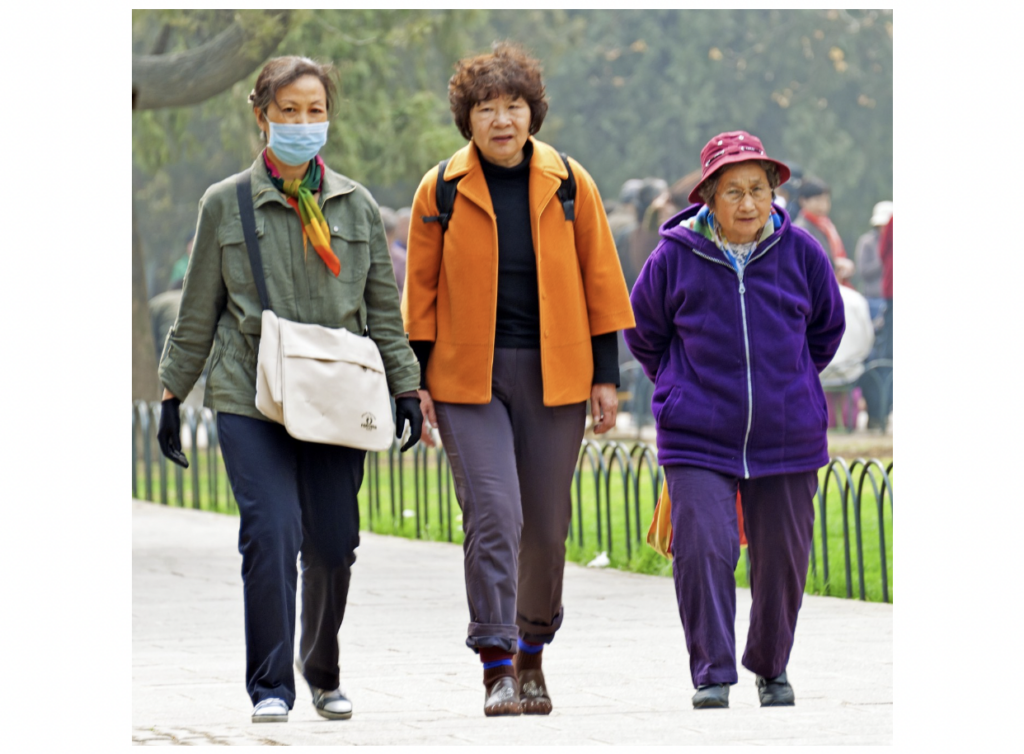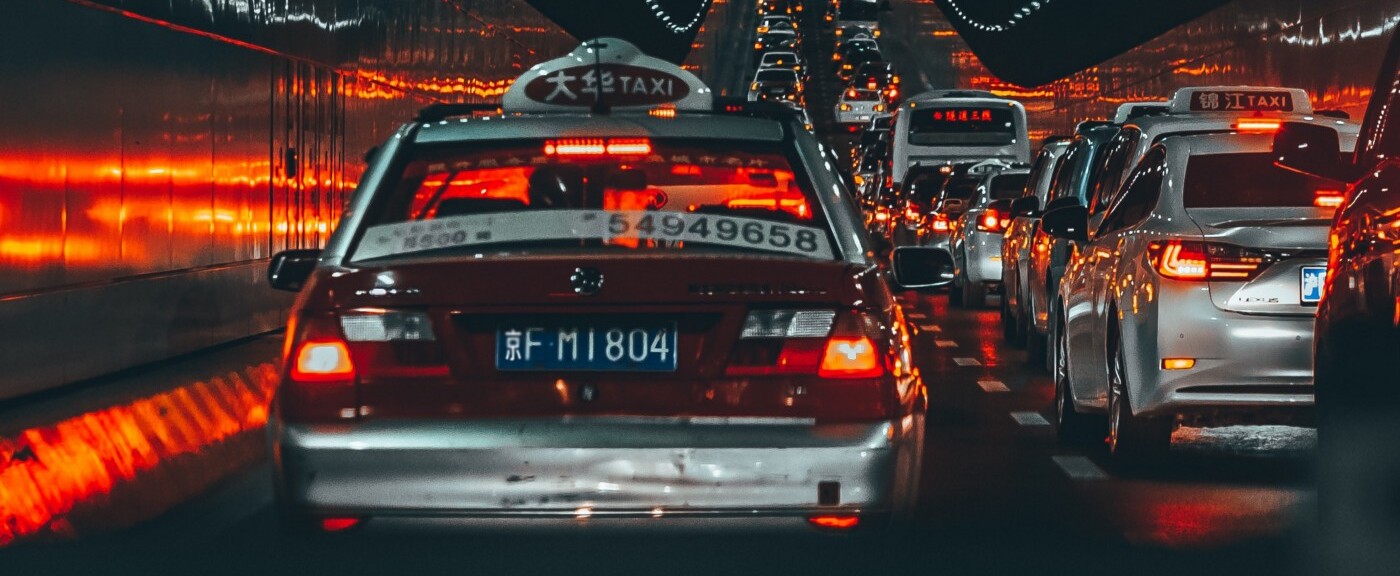It is rarely possible to conduct controlled experiments in the social sciences owing to the vast number of variables in the “real world.” There are instances, however, when the unintended effects of certain policies create circumstances that are like an experiment, called a natural experiment.
When the combination of a vehicle restriction policy in Beijing and the Chinese superstition about the number 4 led to just such a phenomenon, Harvard-China Project affiliate Professor Jing Cao and her fellow collaborators seized the opportunity to study the health effects of air pollution in Beijing. The results were included in their paper published in Journal of the Association of Environmental and Resources Economists (JAERE).
Tiffany Chan from the Harvard-China Project sat down with Jing to discuss the study, the effects of policies on human behavior, and how economics research informs policymaking in China.
Can you tell us about your paper that was published in JAERE and what it is about?
As you know, Beijing’s air pollution has been notoriously poor for years and the haze problem there has led to many people wearing masks. We find it interesting that many economic studies analyze the relationship between pollution and health in the U.S. and other OECD countries, but very few examine that relationship in China. In this paper, we use econometric tools to try to analyze the effects that air pollution has on health in Beijing.

You used the Chinese superstition about the number 4 as part of the methodology of your paper, which is really interesting. Can you take us through that methodology?
Many researchers in the social sciences want to conduct experiments, but they can’t because social experiments often cost too much. In this study, we took advantage of the policy shock generated by Beijing’s policy since the Beijing Olympics in 2008 of restricting all cars from driving on the road one day a week.
The government restricts cars based on the last digit of the license plate number, and two numbers are restricted each day. On Tuesdays, cars with license plate numbers that end with 4 and 9 are restricted, while on Wednesdays cars with plates that end with 5 and 0 are restricted, and so on.
We focused on the number 4 because 4 is pronounced si 四 in Chinese, which sounds like si (死, death) and many people try to avoid this unlucky number. In China, you can pick your license plate number from a list of options, and we ran some statistics which showed that a very low percentage of car owners have plate numbers ending in 4. This means that on days when these number 4 plates are restricted, the restriction has little effect because there are few cars with such licenses. This means the restrictions have less effect on those days and on average there are more cars out on the road compared to other days.
And what did you find?
On the days when plates ending in 4 are restricted, we found empirical evidence that there is higher traffic congestion [the traffic congestion index increases by 20%] and higher air pollution [increases by 12%], and that ambulance calls related to heart disease and fever increase by about 3% and about 10% respectively. We were very lucky to get data on ambulance calls from the Beijing Ambulance Medical Center.
Of course, the health effects of air pollution are different depending on age and gender — for instance, people older than 65 make ambulance calls more frequently than those in other age groups. But we find that the rate of increase in the ambulance calls made by people in the working-age group on the number 4 restriction days is actually greater than that of the 65 or older age group.
The data used in this study was from the first two years of the license plate policy’s implementation. I think that if we had more recent data, we would probably see that the differences in congestion and air pollution between individual days would decrease over time. Mexico City has a similar car restriction policy based on license plates (where odd and even plates are alternately restricted), and a paper examining the Mexico City policy shows that people responded by buying more cars — if they already have a car with an odd-number plate, they want to buy another with an even-number plate.
One day I took a taxi while I was in Beijing and asked the driver why it was so congested; the taxi driver told me it was because license numbers ending in number 4 were restricted that day — so people do notice the effects of these policies. Some of my friends in Beijing now try to pick license plates ending with number 9 [which is restricted on the same day as number 4] so that they can drive on less congested days.
We did our study right after the policy was rolled out in Beijing, and since car purchases are long-term investments, we assume the behavioral changes in people were small in the first one or two years, but that over time these changes might become more significant, so the long-term policy effect might be more diluted.
What is one takeaway that you would want our readers to take away from your paper?
For many metropolitan cities, vehicle emissions are a very important source of air pollution — around 20% of total air pollution. I believe that the government should pay more attention to transportation regulations to avoid traffic congestion. Since vehicles are owned by households, however, one needs to understand household behavior in order to understand the effects of certain policy designs.
Are there any future questions that your research raised?
We recently started a new project with Professor Joe Aldy at Harvard’s Kennedy School of Government. Professor Aldy has conducted many studies on air pollution forecasting data and forecasting errors in the U.S.
We compiled air pollution forecasting data from Beijing and linked it with the air pollution monitoring data, as well as the ambulance call data. We observed two very interesting results. When the actual air pollution level is the same as the forecasted level and the Air Pollution Index (API) is forecasted to exceed 100 [unhealthy levels], there are fewer ambulance calls, which means that people are responding to the forecasts by changing behavior.
When the forecast is wrong and instead predicts a day of lower pollution than is observed, there are more ambulance calls. This shows that when people, especially those with more vulnerable health status, want to go out, they take a look at the air pollution forecasting to help them decide whether they should go out and for how long they will remain outdoors. In other words, people respond to forecasting. This has very important policy and cost-benefit implications.
Do you think policymakers and government leaders in China have become more interested over the past 20 years in academic research and how it can inform policy-making?
About 20 years ago when I was completing my master’s degree , I read a paper by Mun Ho, Dale Jorgenson, and Richard Garbaccio on the health benefits of controlling China’s carbon emissions. [Ho and Jorgenson are also long-time members of the Harvard-China Project, and Garbaccio was an affiliate in the Project’s early years.]
They argued that if China applied a carbon tax nationwide, especially as part of its climate pricing policies, the benefits would be enormous, particularly in terms of reducing emissions of traditional pollutants and the corresponding health benefits. Around the same time, I also conducted a similar city-level co-benefits case study. The Chinese government did not want to commit to carbon reductions, but it was in China’s own interest to do so because reducing carbon reduces pollutant emissions. Many other people were also researching this topic at the time, and we pushed for this research to demonstrate that reducing carbon was in the government’s interest.
Years later, we were on a panel with government officials and they told us exactly what we had been saying all along: that China needs to reduce carbon and that it is in its own interest to reduce the health-related damages. So in answer to your question, I think we need to be patient. Once we have significant research findings, we must try to feed this information to policymakers — but this takes time. I think a lot of things are changing in China, and this is a positive sign. Maybe in the future this process will be more streamlined because government officials are now more educated, and are working closer with academics through workshops and roundtable discussions.
Paper Cited: Nan Zhong, Jing Cao, and Yuzhu Wang. 2017. “Traffic congestion, ambient air pollution and health: Evidence from driving restrictions in Beijing.” Journal of the Association of Environmental and Resources Economists, 4, 3, Pp. 821–856.

Jing Cao is currently an Associate Professor in the Department of Economics in the School of Economics and Management at Tsinghua University. She received her Ph.D. in Public Policy from the Harvard Kennedy School of Government in 2007, and is an affiliate of the Harvard-China Project.

